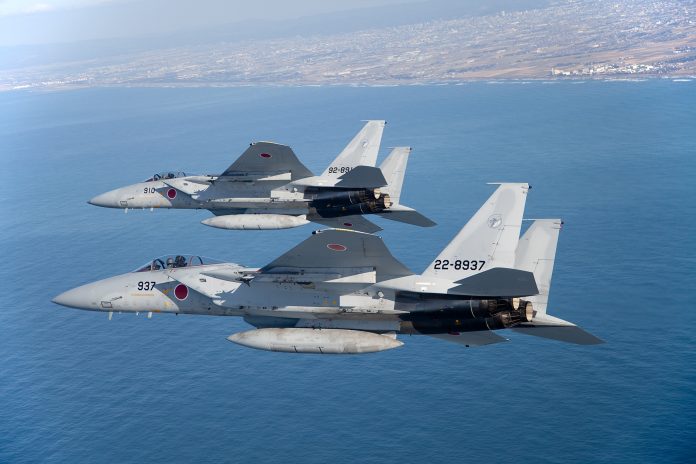Amid escalating security concerns in East Asia, Japan is examining the possibility of employing civilian infrastructure for military purposes and has reportedly identified 33 airports and ports in 10 prefectures as potential candidates for expansion.
According to Nikkei Asia, the Japanese government’s decision is aligned with a comprehensive national security strategy revised at the end of 2022.
As part of this strategy, discussions will soon commence between the government and the relevant prefectures and municipalities tasked with managing these selected facilities.
The report said the aim is to extend runways and docks, thereby enabling the Self-Defense Forces (SDF) and the Japan Coast Guard to swiftly evacuate citizens and deploy troops in case of any unforeseen contingencies.
To materialize this vision, the government intends to designate select facilities as “essential bases” and allocate the necessary funds for these vital upgrades. This proposal will be integrated into the fiscal 2024 budget.
While the government has not made an official announcement, a document drafted in August has revealed that 14 airports and 19 ports have been earmarked for expansion.
Over half of these selected facilities—precisely 16—are strategically positioned within the Ryukyu Islands. These include Okinawa in southern Japan and various islands in the Kyushu and Shikoku regions, strategically situated in the western part of the country.
The emphasis on these particular regions is underpinned by their proximity to two significant geopolitical considerations: China’s continuous military buildup and the escalating concerns surrounding Taiwan.
China’s military advancements have been a growing source of unease, prompting Japan to enhance its defense readiness.
Japan Gears Up For A Possible Taiwan Crisis
Analysts have also identified Taiwan as a potential focal point for armed conflict soon, further underscoring the need for Japan to fortify its security measures in the region.
Tokyo has grown increasingly concerned about Beijing’s growing military presence near the island nation, located nearly 100 kilometers from Japanese territory.
The aggressive military buildup has also raised apprehensions about the potential for Japan to be drawn into any conflict that might jeopardize the crucial sea lanes responsible for supplying the nation with most of its oil.
Over the past year, Tokyo has embarked on a series of proactive measures to enhance its defense capabilities and deter China. One significant step has been an increase in its defense budget, reflecting its commitment to bolstering its security posture.
In response, China has criticized Japan, the United States, and other Western nations for what it perceives as adopting a Cold War mentality in their regional policies.
The efforts to assess the potential military utilization of civilian infrastructure represent yet another stride in readiness for contingencies linked to Taiwan, a strategically important and democratically governed island that China asserts as its own.
The list of airports designated for expansion encompasses several crucial locations, including Yonaguni, New Ishigaki, Miyako, and Naha in Okinawa prefecture, as well as Kagoshima and Miyazaki in Kyushu and Kochi in Shikoku.
These carefully chosen sites hold significant strategic value, serving as potential bases for the Self-Defense Forces (SDF) and even offering logistical support such as fuel and food supply should a contingency arise in Taiwan.
This move also extends to facilitating the US military’s ability to deploy troops in the event of a crisis. However, not all selected airports are currently optimized for military use.
For instance, runways at Yonaguni, New Ishigaki, and Miyako airports are only 2,000 meters long, presenting challenges for military transport aircraft.
The government is considering runway extensions and other enhancements to address this issue to ensure these airports can effectively serve evacuation and military deployment purposes.
In addition to runway extensions, other airports will see the construction of new parking lots, taxiways, and hangars, all designed to streamline the SDF and Japan Coast Guard aircraft operations.
The civilian runways, which are longer than 2,500 meters, represent a significant security resource essential to fulfilling Japan’s defense requirements.
Beyond airport upgrades, the government has outlined plans to construct a new port on Yonaguni Island, equipped to accommodate escort and patrol vessels.
Furthermore, existing docks at Ishigaki, Hirara, and Naha ports in Okinawa, Kumamoto port in Kumamoto, and Hakata port in Fukuoka are set to undergo refurbishment, reinforcing the nation’s maritime capabilities.


































